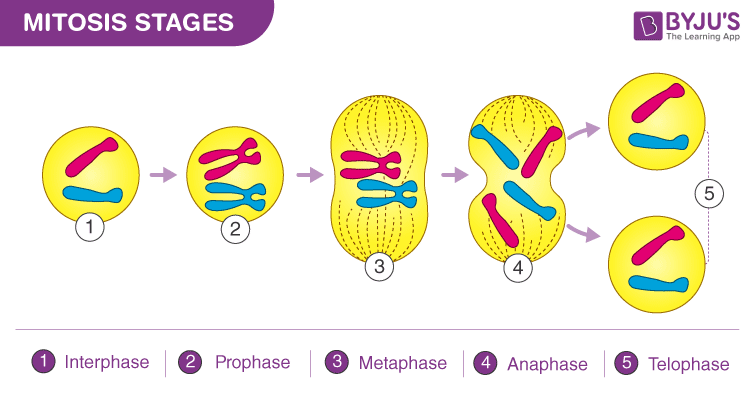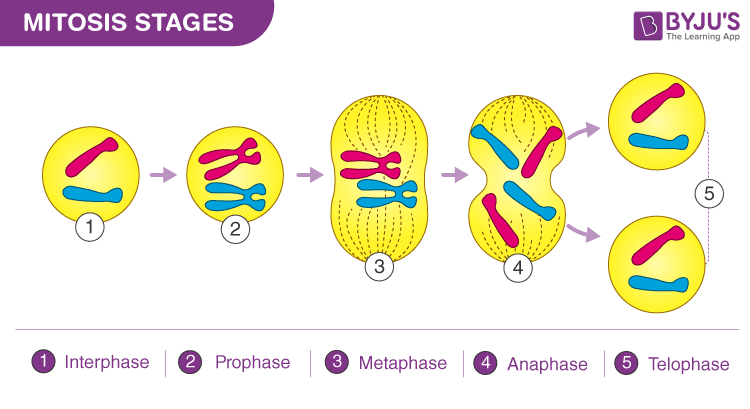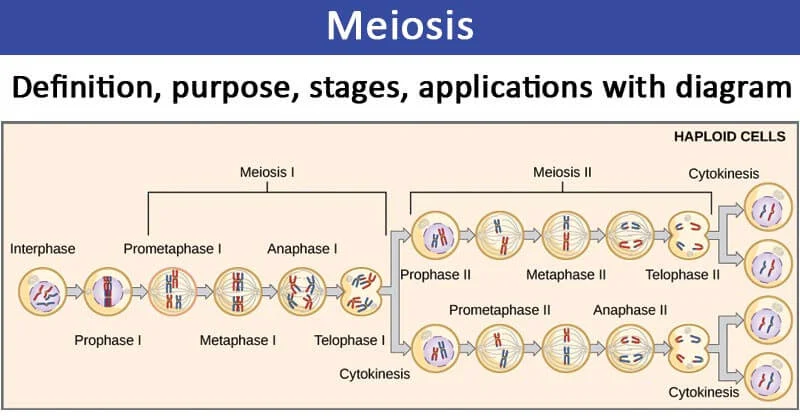ANAPHY PRELIMS WEEK 2
1/75
There's no tags or description
Looks like no tags are added yet.
Name | Mastery | Learn | Test | Matching | Spaced |
|---|
No study sessions yet.
76 Terms
CELLS
- The basic unit of biologic organization of the human body.
- 50 to 100 trillion of cells
- Microns (µm) = 10-3 mm.
- 10 – 100 µm in dm
- Can be seen through microscope.
ROBERT HOOKE
- English Physicist
- “Renaissance Man”, 17th Centure
- Latin word “cella” – small room.
- Cellulae, six-sided cell of a honeycomb.
CELLA
Latin word of cell, it means a “small room”
ANTON VAN LEEUWENHOEK
- Father of Microscopy
- Dutch lens maker
- 300-fold or 270x
- Motile objects
- “animalcules” – a microscopic animal.
ANIMALCULES
a microscopic animal
MATTHIAS JAKOB SCHNEIDEN
- Botany Professor, University of Jena, Germany,
- Different types of plants under the microscope.
THEODOR SCHWANN
- Physiology Professor, University of Louvain, Belgium.
- Different types of animals under the microscope.
MODERN CELL THEORY
- Cells are the smallest complete living things, basic units of organization of all organisms.
- All organism is composed of one or more cells in which all life processes occur.
- Cell arises only from pre-existing cells through the process of cell division.
- All of today’s existing cells are descendants of the first cells formed early in the evolutionary history of life on earth.
FUNCTIONS OF CELLS
1. Cellular metabolism and energy use
2. Synthesis of molecules
3. Communication
CELL TYPE CLASSIFICATION
PROKARYOTES
EUKARYOTES
PROKARYOTES
- “pro” – before, “karyose” – nut or kernel.
- Bacteria and Arachea
- Single celled.
| _____ |
Cell Structure | Simple |
Nucleus | No prominent nucleus |
Size | Small |
Cell Wall | Peptidoglycan |
Ribosomes | Small |
Cell Type | Unicellular |
Organelles | No organelles |
Examples | Bacteria and Archaea |
EUKARYOTES
- “eu” – true, “karyose” – nut or kernel.
- Animal and Plant cells
- With nucleus and cell organelles.
| _____ |
Cell Structure | Complex |
Nucleus | Prominent nucleus |
Size | Large |
Cell Wall | Chitin or Cellulose |
Ribosomes | Large |
Cell Type | Unicellular or Multicellular |
Organelles | Membrane-bounded |
Examples | Human, Plant, and Fungi |
BASIC CELL STRUCTURE
1. Cell Membrane
2. Cytoplasm
3. Nucleus
CELL MEMBRANE
- A.k.a Plasma Membrane.
- Controls the movement of substances in and out of the cell.
- Gives form to the cell.
- Semi-permeable – it only allows specific substances to pass through while blocking others.
- Lipids and proteins
- Phosphate – outside
- Fatty acid – inside
MEMBRANE LIPIDS
- 45 – 50%
- Phospholipids – bilayer
- Cholesterol – 1/3 of the total lipids – it helps stabilize the membrane and keep it flexible.
- Glycolipids – 5%
MEMBRANE PROTEINS
- 45 – 50%
- Integral Proteins – consists of regions made up of amino acids with hydrophobic R groups and other regions of amino acids with hydrophilic R groups.
- Peripheral Proteins – may be bound to integral membrane proteins, whereas others are bound to the polar heads of the phospholipid molecules.
- Functions:
o Anchoring Proteins
o Recognition Proteins – identifiers
o Enzymes – catalyze reactions in the cytoplasm or the ECF
o Receptor Proteins – sensitive to ligands
o Carrier Proteins – bind solutes, needs ATP
INTEGRAL PROTEINS
- consists of regions made up of amino acids with hydrophobic R groups and other regions of amino acids with hydrophilic R groups.
PERIPHERAL PROTEINS
- may be bound to integral membrane proteins, whereas others are bound to the polar heads of the phospholipid molecules.
MEMBRANE CARBOHYDRATES
- 4 – 8%
- Proteoglycans – helps in cell signaling and protection
- Glycoproteins – cell recognition, tells your cells apart from foreign objects.
- Glycolipids – helps in communication and maintaining the stability of the cell membrane.
- GLYCOCALYX: sugar-rich layer, with sticky property that acts like biological glue helping in:
o Anchoring and locomotion
o Binding specificity
o Lubrication and protection
o Recognition
PROTEOGLYCANS
- helps in cell signaling and protection
GLYCOPROTEINS
cell recognition, tells your cells apart from foreign objects.
GLYCOLIPIDS
- helps in communication and maintaining the stability of the cell membrane.
GLYCOCALYX
- sugar-rich layer, with sticky property that acts like biological glue helping in:
o Anchoring and locomotion
o Binding specificity
o Lubrication and protection
o Recognition
3 WAYS CELLS ARE BOUND TOGETHER
a. Glycoproteins in the glycocalyx act as an adhesive or cellular glue.
b. Wavy contours of the membranes of adjacent cells fit together in a tongue-and-groove fashion.
c. Special cell membrane junctions are formed.
TYPE JUNCTIONS
- Impermeable junctions (doesn’t allow liquid or gas to pass through with it) that encircle cells like a zipper.
- Bind cells tightly together.
Prevent substances from leaking through the extracellular space.
DESMOSOMES
- Anchoring junctions like rivets or spot welds.
- Found in tissues that undergo stress (e.g., heart, skin).
- Keep cells from pulling apart.
Connected by intermediate filaments.
GAP JUNCTIONS
- Allow communication between cells.
- Found in heart and embryonic cells.
Use connexons (protein channels) to allow ions and molecules to pass.
CYTOPLASM
- Protoplasm - includes all living material inside the cell membrane.
- Matrix substance in which chemical reactions occur.
- Gel-like material suspending all the organelles.
- Contains cytosol (the fluid part) and organelles (the tiny structure that perform specific functions e.g. mitochondria).
PROTOPLASM
- includes all living material inside the cell membrane.
ORGANELLES
- The specialized cellular components that are metabolic machinery of the cell.
- It is specialized to carry out a specific function for the cell.
CENTRIOLES
- Paired cylindrical bodies that are each made up of nine triplets of microtubules.
- During mitosis (cell division), they organize a microtubule network to form the spindle and asters. They form the bases of cilia and flagella – hairlike structures used for cell movement.
ROUGH ENDOPLASMIC RETICULUM
- A membranous system that encloses a cavity (cistern—a tank for storing water). It coils through the cytoplasm and is externally studded with ribosomes.
- Within the cisterns, sugar groups are attached to proteins. The proteins are bound in vesicles so they can be transported to the Golgi apparatus and other sites. Their external faces synthesize phospholipids.
SMOOTH ENDOPLASMIC RETICULUM
- A membranous system of sacs and tubules that lack ribosomes.
- The site of steroid (cholesterol) and lipid synthesis, lipid metabolism, and drug detoxification.
GOLGI APPARATUS
- Located close to the nucleus, it is a stack of flattened membranes and associated vesicles.
- It packages, changes, and separates proteins for secretion from the cell, to be included in lysosomes, and to be incorporated into the plasma membrane.
LYSOSOME
- Membranous sacs that contain acid hydrolases – special enzyme that can break down things.
- The sites of intracellular digestion – digest unwanted materials inside the cell.
PEROXISOMES
- Membranous sacs of oxidase and catalase enzymes — this process results to reduction of oxygen to water or hydrogen peroxide.
- The enzymes detoxify several toxic substances such as free radicals (damaging molecules). The most important enzyme, catalase, breaks down hydrogen peroxide – harmless water and oxygen.
MICROFILAMENT
- Fine filaments composed of actin, a protein.
- Aid in muscle contraction and other intracellular movement and help to form the cell’s cytoskeleton – the cell’s internal support.
INTERMEDIATE FILAMENT STRUCTURE
- Protein fibers: composition varies.
- The stable cytoskeletal elements; resist mechanical forces acting on the cell; help form desmosomes (special cell junctions).
MICROTUBULES
- Cylindrically shaped structures made of tubulin proteins.
- They support the cell, giving it shapes, and are involved in intracellular and cellular movements. ____ form centrioles and, if present, cilia and flagella (used in movement). They form the mitotic spindles during cell division, binding to the chromosomes and separating the two strands.
MITOCHONDRIA
- Double-membrane structures that are rod-like in appearance; they are folded into projections (cristae).
- The site of ATP synthesis (energy the cell uses to work). The _____ are the powerhouses of cells.
RIBOSOMES
- Dense particles made up of two subunits that are each composed of ribosomal RNA and protein. They may be either free or attached to the RER.
- The sites of protein synthesis.
CELL NUCLEUS
- Central role in the cell operation.
- It is the storage of information and distributed to guide the life processes of the cell.
- It contains the genetic instructions needed to synthesize the proteins that determine cell structures and functions.
NUCLEOLUS
- Dense spherical (non-membrane bounded) bodies, composed of ribosomal RNA and proteins.
- Site of ribosome subunit manufacture – leave the nucleus and help build proteins in the cell.
CHROMATIN
- Granular, threadlike material composed of DNA and histone proteins. “Beads on a string.”
- DNA constitutes the genes, which carry instructions for building proteins. The structure of _____keeps DNA organized and prevents breakage.
CELL PHYSIOLOGY
Passive Transport
Active Transport
Vesicular Transport
PASSIVE TRANSPORT
- There’s no metabolic energy expenditure.
- Diffusion, osmosis, facilitated diffusion.
ACTIVE TRANSPORT
- There is a metabolic energy expenditure.
- Ion pumps, Na+/K+ transport.
VESICULAR TRANSPORT
- Use of vesicles or membrane bound sacs.
- Endocytosis – process where the cell takes in.
- Exocytosis – process where the cell releases.
CELL CYCLE
- Interphase
- Cell Division (Mitosis)
- Cytoplasmic Division (Cytokinesis)
- Differentiation
INTERPHASE
- An interval of time between cell divisions.
- This is when they perform normal functions.
o G1 phase – 8 hours or more
o S phase – 6-8 hours
o G2 phase – 2-5 hours
G1 PHASE
- Cells are metabolically active with rapid protein synthesis and growth.
- No cell division activities.
- As this phase ends, the centrioles begin replication, preparing for cell division.
S PHASE
- DNA is replicated.
- It is the process of DNA replication involves enzymes attaching to origins or replication.
G2 PHASE
- Cell division-influencing enzymes and other proteins are synthesized and moved to their required sites.
- Centriole replication finishes and the cell is now ready to divide.
- The two DNA molecules are formed from the original template strands.
MITOSIS
- Somatic cells – all body cells (except sperm and egg)
- Two new daughter cells result from cell division, receiving the same number of chromosomes present in the parent cell.
- Except cardiac muscles and neurons – do not usually undergo mitosis.
- When the nucleus divides, it must be precise so an accurate copy of the DNA information can be made by the new cell.

CYTOKINESIS
- The division of cytoplasm.
- It begins during Anaphase and is completed during Telophase.

APOPTOSIS
- Programmed cell death.
- A normal process by which cell number within various tissues is adjusted and controlled.
- Damaged or potentially dangerous cells, virus-infected cells, and potential cancer cells.
- Are regulated by specific genes.
GAMETOGENESIS
- Gametes – mature germ cells.
- It undergoes to the process of MEIOSIS.
- “How the body makes sperm and eggs using meiosis?”
- Two types:
o Spermatogenesis makes sperm in males.
o Oogenesis makes eggs in females.
SPERMATOGENESIS
The process in which the the makes sperm in males using meiosis.
SPERMATOGONIA
- Precursor cells in the testicular tubules.
- It contains 46 chromosomes
- It divides via mitosis forming PRIMARY SPERMATOCYTES.
PRIMARY SPERMATOCYTES
- Contains 46 chromosomes.
- It divides via Meiosis 1 forming two SECONDARY SPERMATOCYTES.
SECONDARY SPERMATOCYTES
- Contains 23 chromosomes.
- It divides via Meiosis 2 forming two SPERMATIDS.
SPERMATIDS
- Contains 23 chromosomes.
- It matures to become SPERM CELLS.
OOGENESIS
The process on how the body makes eggs in females using meiosis.
OOGONIA
- Precursor cells
- It contains 46 chromosomes.
It divides repeatedly in the fetal ovaries prior to birth - forms PRIMARY OOCYTES.
PRIMARY OOCYTE
- It is surrounded by a single layer of granulosa cell or follicular cells, forming the PRIMARY FOLLICLES.
- Inside the follicles the _____ begins but does not complete Prophase of the Meiotic I during fetal life.
PRIMARY FOLLICLES
- Large numbers are formed, with many degenerating during infancy and childhood.
- 500,000 persist into adolescence.
- Loss of _____ continues throughout a female’s reproductive years.
- Every reproductive cycle, several oocytes start to mature.
OOCYTE
- Meiosis I completed when the mature ovum is expelled.
- Meiosis II completed only after the oocyte is fertilized.
MEIOSIS
- Part of GAMETOGENESIS.
- A reduction division of the nuclear material so that each gamete contains only half as much hereditary material as the parent cell.
o Meiosis I - chromosomes are reduced in half.
o Meiosis II - four daughter cells each containing only half the genetic material.

DIFFERENTIATION
- It is the process of specialization of a cell.
- New cells must be generated for growth and tissue repair to occur.
- STEM CELLS:
o It can divide repeatedly without specializing.
o It can divide either into two identical daughter cells or so that one daughter cell becomes partially specialized (PROGENITOR CELLS)
o It has the ability to heal the body in the future.
CELLULAR ASPECTS OF AGING
- 35% genetics
- Other factors:
Cellular Clock
Death Genes
DNA Damages
Free Radicals
Mitochondrial Damage
CELLULAR CLOCK
- After a certain passage of time or a certain number of cell divisions, results in the death of a given cell line.
DEATH GENES
- Turn on late in life, or sometimes prematurely, causing cells to deteriorate and die.
DNA DAMAGE
- Through time, DNA is damaged, resulting in cell degeneration and death.
FREE RADICALS
- Atoms or molecules with an unpaired electron.
- DNA is also susceptible to direct damage, resulting in mutations that may result in cellular dysfunction and, ultimately, cell death.
MITOCHONDRIAL DAMAGE
- _____ may result in loss of proteins critical to mitochondria.
- Mitochondrial DNA more sensitive to free radicals.